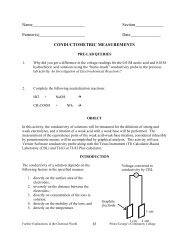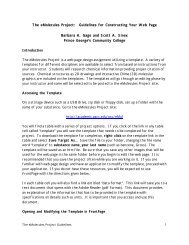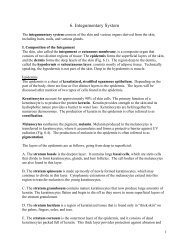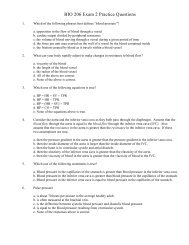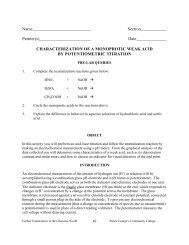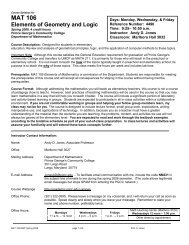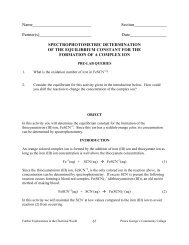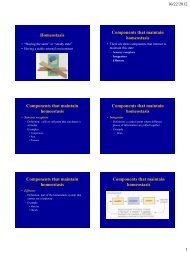Tissues: The Living Fabric
Tissues: The Living Fabric
Tissues: The Living Fabric
Create successful ePaper yourself
Turn your PDF publications into a flip-book with our unique Google optimized e-Paper software.
– Remove harmful agents– Prevent further injury– Restore tissue health• Immune response– Specific and deadly attacks against invading pathogens• Steps of tissue repair– Inflammation• Chemicals (histamines) are released from damaged tissue and they causecapillaries to dilate and leak• Fluid enters injury site with more chemicals (clotting factors and antibodies)• WBCs enter site of injury– Organization• New capillaries proliferate and restore proper blood flow to injured tissue• Clot is replaced by granulation tissue• Debris is phagocytized• Fibroblasts produce collagen fibers to help strengthen injured tissue• Epithelia regenerate• Regeneration and fibrosis– Scab detaches– Regeneration is replacement of damaged tissue with new tissue– Fibrosis is the proliferation of connective tissue to form scar• Fibrosis may occur depending on the type and severity of the injury• Epithelial tissue and bone tissue are good at regenerating without fibrosis• Dense regular connective tissue and cartilage have considerably less regenerativeproperties• Cardiac tissue and nervous tissue have essentially no functional regenerativecapacity• Name the tissue– Amorphous matrix that appears glassy



